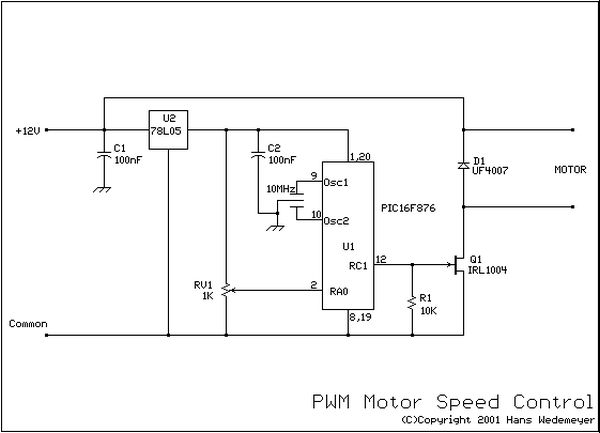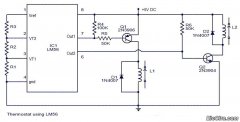
Augmenting Plant Behavior Through Robotics using Arduino

The PhytoBot is a semi-intelligent plant that reacts to external stimuli, specifically light intensity and light location, mimicking the behavior of a phototropic plant. It is designed as an interactive artwork intended for prolonged operation. The motivation behind this design stems from a lack of understanding and acceptance of plants as responsive living organisms. Many individuals tend to perceive life solely through objects with immediate visual and audible responses, often overlooking plants due to their slower, more gradual reactions. The PhytoBot features two degrees of freedom in its motion: rotational and angular. The rotational motion allows for a full 360-degree range, while the vertical/angular motion has an approximate range of 70 degrees. Additionally, the PhytoBot includes pulsing lights on its surface that transition smoothly from on to off, simulating a breathing effect. The frequency of the pulsing is influenced by the amount of light received, with a rapid pulse indicating a healthy plant and a slow pulse suggesting a need for more light. The PhytoBot incorporates two primary mechanical components: it is directed toward light sources by two servos operating in the x and y axes. Upon locating a light source, the plant exhibits twitching behavior that varies with the proximity of the light; a closer point light results in more pronounced twitching compared to when the plant is directed toward the sun.
The PhytoBot's design integrates a microcontroller to process sensor data from light sensors, which detect both the intensity and direction of incoming light. This data is utilized to control the servos, allowing the plant to orient itself toward the most favorable light source. The servos are selected based on their precision and responsiveness, ensuring accurate movements in both the x and y axes.
The pulsing lights are driven by a series of LEDs that are modulated based on the microcontroller's analysis of the light sensor readings. A pulse-width modulation (PWM) technique is employed to create a smooth transition between the on and off states of the LEDs, enhancing the visual representation of the plant's "breathing" behavior. The frequency of the pulsing is programmed to vary, with thresholds established to differentiate between healthy and light-deprived conditions.
The mechanical structure of the PhytoBot is designed to accommodate the movement capabilities while maintaining stability. The base supports the servos and provides a solid foundation, while the plant structure is lightweight to facilitate agile movements. The use of flexible materials for the plant's body allows for realistic twitching motions, further enhancing the interactive experience.
In summary, the PhytoBot combines advanced sensor technology, precise servo control, and visually engaging light displays to create an interactive experience that challenges traditional perceptions of plant life, emphasizing their responsiveness and vitality. This innovative approach serves not only as an artistic expression but also as an educational tool, fostering a deeper understanding of the dynamic nature of living organisms.The PhytoBot is a semi-intelligent plant which responds to external stimulus (light intensity and light location) and responds to it as a phototropic plant would. Essentially it is designed as a piece of interactive artwork for operation over a long period of time.
The motivation driving this was triggered by the lack of understanding & acceptance of plants as reactive living organisms. Many of us are so used to placing life on merely objects that have visual and audible external responses which can be seen by the naked eye. Plants on the other hand tend to be overlooked as their responses are more drawn out over time and hence we tend to see them as inanimate objects.
The PhytoBot has two degrees of freedom and motion, rotational and angular (from the normal). The rotational range of motion is 360 degrees whereas the vertical/angular range is approximately 70 degrees. The second component of the response is the pulsing lights on the face. The lights pulse from on to off in a smooth glowing fashion as if the plant was breathing. The variance in frequency is driven by the amount of light given to the plant. A fast pulse indicates that the plant is healthy, and a slow pulse indicates that the plant is in need of more light.
There are two basic mechanical features within the PhytoBot. When the PhytoBot actively seeks light, it is oriented by two servos in the x and y axes. When the light has been located the plant will twitch depending on how far away the light source is. For example a closer point light will produce more twitching than if the Plant was facing the sun. 🔗 External reference
The PhytoBot's design integrates a microcontroller to process sensor data from light sensors, which detect both the intensity and direction of incoming light. This data is utilized to control the servos, allowing the plant to orient itself toward the most favorable light source. The servos are selected based on their precision and responsiveness, ensuring accurate movements in both the x and y axes.
The pulsing lights are driven by a series of LEDs that are modulated based on the microcontroller's analysis of the light sensor readings. A pulse-width modulation (PWM) technique is employed to create a smooth transition between the on and off states of the LEDs, enhancing the visual representation of the plant's "breathing" behavior. The frequency of the pulsing is programmed to vary, with thresholds established to differentiate between healthy and light-deprived conditions.
The mechanical structure of the PhytoBot is designed to accommodate the movement capabilities while maintaining stability. The base supports the servos and provides a solid foundation, while the plant structure is lightweight to facilitate agile movements. The use of flexible materials for the plant's body allows for realistic twitching motions, further enhancing the interactive experience.
In summary, the PhytoBot combines advanced sensor technology, precise servo control, and visually engaging light displays to create an interactive experience that challenges traditional perceptions of plant life, emphasizing their responsiveness and vitality. This innovative approach serves not only as an artistic expression but also as an educational tool, fostering a deeper understanding of the dynamic nature of living organisms.The PhytoBot is a semi-intelligent plant which responds to external stimulus (light intensity and light location) and responds to it as a phototropic plant would. Essentially it is designed as a piece of interactive artwork for operation over a long period of time.
The motivation driving this was triggered by the lack of understanding & acceptance of plants as reactive living organisms. Many of us are so used to placing life on merely objects that have visual and audible external responses which can be seen by the naked eye. Plants on the other hand tend to be overlooked as their responses are more drawn out over time and hence we tend to see them as inanimate objects.
The PhytoBot has two degrees of freedom and motion, rotational and angular (from the normal). The rotational range of motion is 360 degrees whereas the vertical/angular range is approximately 70 degrees. The second component of the response is the pulsing lights on the face. The lights pulse from on to off in a smooth glowing fashion as if the plant was breathing. The variance in frequency is driven by the amount of light given to the plant. A fast pulse indicates that the plant is healthy, and a slow pulse indicates that the plant is in need of more light.
There are two basic mechanical features within the PhytoBot. When the PhytoBot actively seeks light, it is oriented by two servos in the x and y axes. When the light has been located the plant will twitch depending on how far away the light source is. For example a closer point light will produce more twitching than if the Plant was facing the sun. 🔗 External reference





